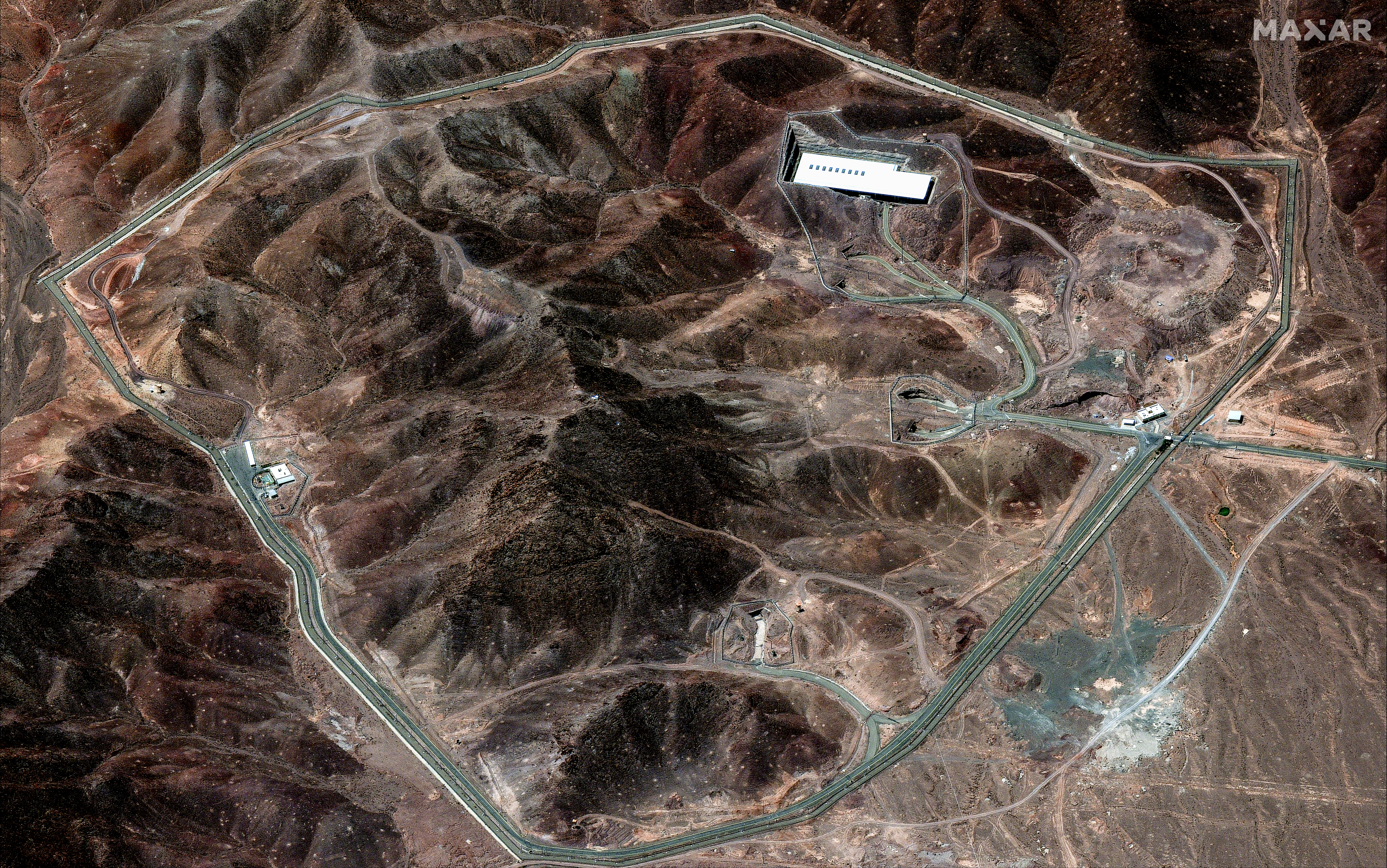If a U.S. ‘bunker buster’ hits a nuclear site, what might get released into the air?
If the U.S. does drop a powerful “bunker buster” bomb on a suspected underground nuclear weapons site in Iran, experts in radiation hazards see little risk of widespread contamination.
The site in question, Iran’s mysterious Fordow Fuel Enrichment Plant, is built into a mountainside and seems to be in the business of processing uranium isotopes. That means it would mostly be working with uranium in the form of a gas called uranium hexafluoride.
“It’s a big, heavy gas molecule,” says Emily Caffrey, a health physics expert at the University of Alabama at Birmingham, who explains that because this gas molecule is so heavy, “it’s likely not going to travel super-far.”
Any contamination from an attack would remain fairly localized to the site, she says.
While it’s hard to estimate the risks given that the exact type and quantity of the material at the site aren’t publicly known, she says, an environmental release likely wouldn’t present a problem “for anybody that’s not in the immediate area.”
Edwin Lyman, director of nuclear power safety at the Union of Concerned Scientists in Washington, D.C., adds that the two major kinds of uranium isotopes found at this type of facility “are at the low end of hazard with regard to radioactive materials.”
“So there’s not a significant, dire health threat if those materials got released to the environment,” he says. “It would probably lead, at most, to a relatively low level of contamination — not zero — but probably fairly close to the site.”
One concern is that uranium hexafluoride gas can react with water in the air to form hydrofluoric acid. “That is an acutely hazardous material that can harm or kill people,” says Lyman.
But in this case, given that the site is in underground caverns “and the bunker busters are designed to collapse the mountain above it,” he says, “any kind of environmental release would be relatively low since it would be essentially inhibited by this mass of rock that’s rained down on it.”
Rafael Mariano Grossi, the director-general of the International Atomic Energy Agency, has said that the agency has been monitoring the effects of strikes on Iran’s facilities.
One attack damaged the aboveground portion of the Natanz Fuel Enrichment Plant, he recently reported, but the “level of radioactivity outside the Natanz site has remained unchanged and at normal levels, indicating no external radiological impact to the population or the environment from this event.”
Inside the site, however, he said there was “both radiological and chemical contamination,” with the main concern being the chemical toxicity of uranium hexafluoride and the compounds generated when it made contact with water.
The main radiation danger there would come from inhaling or ingesting uranium, he said, but “this risk can be effectively managed with appropriate protective measures, such as using respiratory protection devices while inside the affected facilities.”
A ban on feeding pigeons ruffles lots of feathers in Mumbai
The pigeon population has exploded — a result of people feeding the birds. For some it's a holy duty and a way to connect to nature. Critics point to health risks tied to exposure to pigeon droppings.
‘Rosemead’ tells a tragic — and true — story
The new movie stars Lucy Liu as an ailing mother to Joe, played by Lawrence Shou as a teenager facing mental illness in his feature debut role.
From 400-year-old globes to cosmic shrouds: A Maine library brings maps to life
From 400-year-old globes to cosmic funeral shrouds, how the Osher Map Library in Maine shows people that maps aren't just for navigation — but windows into history, culture, and how we see the world.
Benin’s interior minister says a coup announced earlier has been foiled
Earlier, a group of soldiers had appeared on Benin 's state TV Sunday to announce the dissolution of the government in an apparent coup, the latest of many in West Africa.
A fire at a popular nightclub in India’s Goa state kills at least 25, officials say
At least 25 people, including tourists, were killed in a fire at a popular nightclub in India's Goa state, the state's chief minister said Sunday.
National parks fee-free calendar drops MLK Day, Juneteenth and adds Trump’s birthday
The Trump administration, which has railed against what it describes as "woke" policies, removed MLK Day and Juneteenth from next year's list of fare-exempt days for visitors at dozens of national parks.






